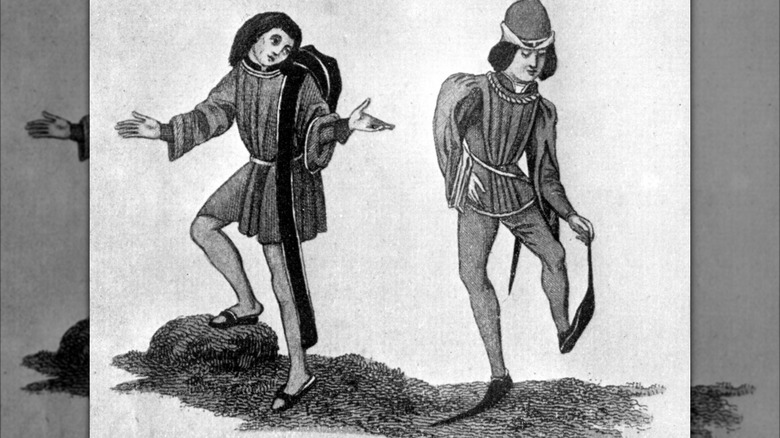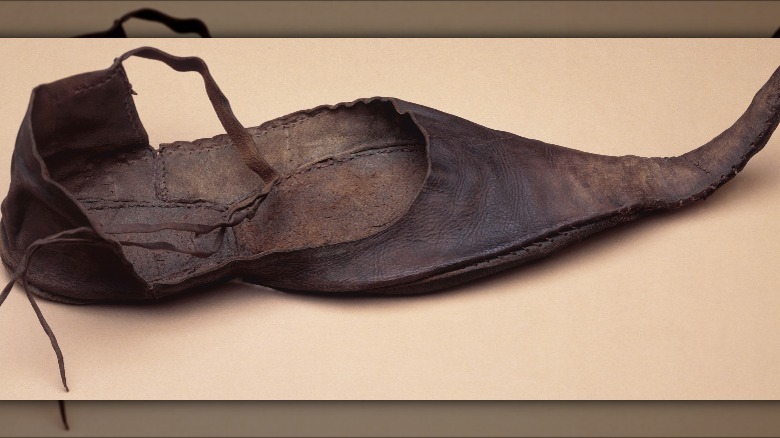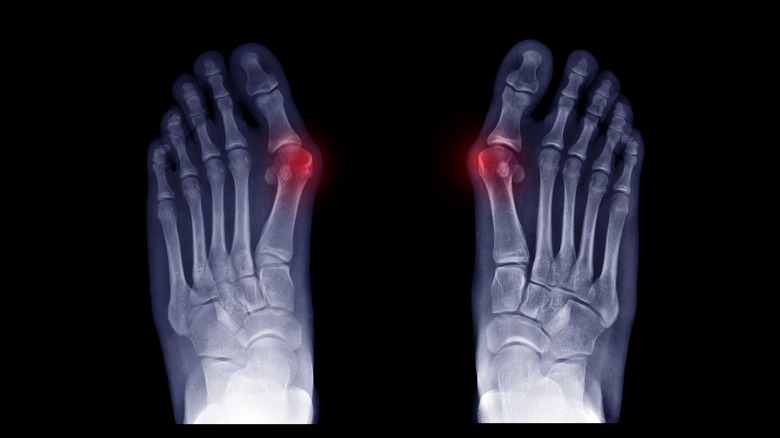People In Medieval Times Wore Shockingly Long Shoes That Even Elves Would Laugh About
Fashion has evolved throughout the centuries, and what was once considered stylish may be deemed odd by today's standards. Take, for instance, the medieval style. Tunics, leggings, and trousers were typical clothing items for men, and they were made of cotton, leather, hemp, wool, or silk. Fashion also dictated one's social status. Wealthy individuals wore clothing made from expensive fabric, while those in lower classes chose fabrics that were less expensive and easier to acquire, according to Medieval Chronicles. Attires were made more attractive with the use of accessories, such as fur coats, belts, and large hats.
Oftentimes, comfort and practicality were sacrificed for the sake of style. Men and women wore layers upon layers of clothing, and it took plenty of time to dress up for the day. Exaggerated sleeves, known as bombast sleeves, were also common among men's clothing, as they made them appear to have larger biceps (via Dusty Old Thing). Other fashion trends during medieval times include hennin hats, byrockets, bliauts, and ridiculously pointed shoes called crakows.
The extremely pointy shoes of the nobles
Today, there are different styles of pointy shoes for men and women. The pointiness of modern shoes, however, is no match for the crakows that gained popularity in Europe in the 14th century. The name crakow came from the city of Kraków, Poland, where the shoe style originally came from. Crakows were also called by some as poulaines, and the elongated portion was usually filled with stuffing materials, such as moss or wool, to retain its shape, as noted by the MET Museum. Men and women both wore this type of footwear, but the shoes for the males typically had longer tips that measured anywhere from a few inches up to 20 inches.
According to Atlas Obscura, crakows were more of a status symbol than a fad. More materials were used to create the shoes, which made them more expensive. Additionally, the impracticality of the design prevented wearers to engage in physical labor, which meant that they lived in luxury and could afford to not work and lounge around with their fancy footwear. Most crakows were made of leather, and some were embellished with gaudy adornments. As the popularity of the crakows grew, those in the lower class found ways to recreate the style using cheaper materials, much to the dismay of the nobles.
In 1368, King Charles V of France banned the use of crakow shoes because the pointed tips made it difficult for wearers to kneel down while praying (via Shoe IQ). England followed suit in 1463 when King Edward IV passed a law that made it illegal to wear crakow shoes that had tips longer than 2 inches.
A plague of bunions
Some say fashion is worth sacrificing for, and that's just what happened to those who enjoyed wearing crakow shoes. A study published in the International Journal of Paleopathology, via Science Direct, noted the increase of people with Hallux valgus — or bunions — in the 14th and 15th centuries. The study explained that various factors contribute to the development of bunions, but the most common during that time was wearing tight and pointy footwear, such as crakows. "It seems clear that the increasing pointiness of shoes unleashed a plague of bunions across medieval society," stated the study's authors (per The Conversation).
The study was conducted by unearthing skeletal remains buried between the 11th and 13th centuries and the 14th and 15th centuries. Only 6% of skeletons had evidence of bunions in the former, while 27% had bunions in the latter group. Co-author of the study, Jenna Dittmar, told CNN, "It looks painful to look at the bone," noting the disfigurement of the bones on the feet of the skeletons. The study also confirmed that crakows were mostly worn by the upper class. Only 3% had bunions out of those who were buried in cemeteries for the working class. In comparison, 23% had the foot condition in the group of skeletons excavated from the burial grounds of the wealthy.


